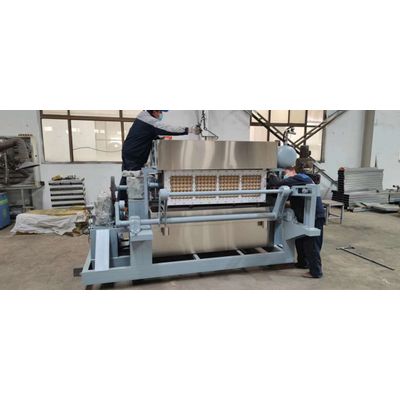

- Home
- Companies
- Beston Group Co., Ltd.
- Articles
- Cost Savings and ROI: The Financial ...

Cost Savings and ROI: The Financial Benefits of Investing in Paper Tray Machines
Investing in a paper pulp egg tray machine is a strategic decision that can transform the financial landscape for businesses in the packaging and manufacturing industries. As enterprises seek ways to optimize costs, enhance production efficiency, and achieve sustainability targets, paper tray machines present a highly cost-effective solution. This article delves into the financial advantages of these machines, highlighting the substantial cost savings and return on investment (ROI) they deliver.
Reducing Production Costs through Automation
One of the most compelling benefits of adopting a bagasse pulp molding machine is its capacity to drastically reduce production costs. Traditional methods of manufacturing paper trays are labor-intensive and time-consuming, requiring significant manpower and energy resources. In contrast, modern paper tray machines are designed with advanced automation systems that streamline the entire production process.
By automating the pulp molding, drying, and shaping phases, these machines minimize manual intervention, which translates into lower labor costs. Additionally, automated machines are highly efficient, reducing material wastage. For businesses focused on large-scale production, the cumulative savings on labor and raw materials can be substantial.
Energy Efficiency and Operational Savings
The energy demands of industrial processes can be a significant cost driver. However, a paper pulp egg tray machine is engineered to maximize energy efficiency. Many of these machines are equipped with energy-saving motors and optimized heating systems, which reduce electricity consumption during production.
The drying process, traditionally one of the most energy-intensive stages, is significantly streamlined in modern machines. High-efficiency drying tunnels and integrated heat recovery systems enable these machines to dry paper trays rapidly with minimal energy expenditure. This leads to noticeable reductions in utility bills, thus improving the overall cost structure of manufacturing operations.
Enhanced Productivity and Output Quality
A paper tray machine is not only an asset for cost savings but also a driver of productivity. The automation of production processes ensures consistent, high-quality output with minimal defects. This reduces the need for rework, saving both time and materials. Furthermore, the continuous operation of these machines allows businesses to meet growing market demand without compromising quality, providing a clear competitive edge.
The ability to produce a large volume of trays efficiently means that businesses can scale their operations with minimal incremental costs. This scalability is crucial for enterprises looking to expand their market reach or diversify their product offerings. The increased throughput directly contributes to higher revenue generation, thus accelerating the payback period for the initial investment.
Calculating the ROI: A Long-Term Financial Perspective
When considering the purchase of a paper pulp egg tray machine, understanding the ROI is essential for sound financial planning. While the upfront cost may seem significant, the long-term financial gains justify the investment. The typical ROI for these machines is achieved within a few years, primarily due to the significant reductions in labor, material, and energy costs.
Moreover, the machine’s durability and low maintenance requirements contribute to lower operational costs over its lifespan. With proper maintenance, a quality paper tray machine can operate efficiently for a decade or more, further amplifying the long-term financial returns. This durability ensures that companies can continue to generate profits from their investment for years, even in fluctuating market conditions.
Sustainability and Cost Efficiency
In today’s business environment, sustainability is not just a regulatory requirement but also a cost-saving measure. A paper pulp egg tray machine uses recycled paper as its primary raw material, which not only lowers material costs but also reduces waste. The ability to convert waste paper into usable products aligns with environmental goals while also cutting down disposal costs.
Additionally, many machines are designed with water recycling systems, reducing the consumption of fresh water during the pulping process. These sustainable features do not just enhance a company’s green credentials; they also contribute to significant cost savings over time, reinforcing the machine’s overall ROI.
Conclusion
The financial benefits of investing in a paper tray machine are manifold, encompassing cost reductions in labor, energy, and materials, as well as improved productivity and sustainable practices. For businesses looking to achieve long-term cost efficiency and maximize their ROI, integrating a paper pulp egg tray machine into their production line is a sound financial strategy. This investment not only enhances profitability but also aligns with sustainable manufacturing practices, paving the way for a competitive and resilient future.
